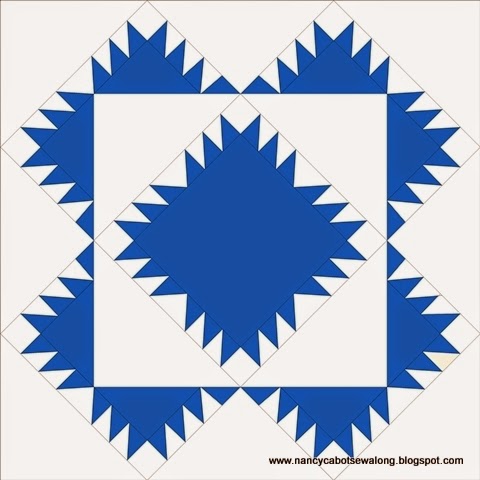 |
| Calico Bush |
November 27, 1933-"If you have any odds and ends of calico left over after making small daughter's dresses and your own aprons, a "
Calico Bush" quilt will make good use of them." That is what Nancy Cabot wrote when introducing the pattern for her
Calico Bush quilt design today.
I agree that this is a good pattern for using up your scraps. There are sixteen diamond shapes in the "bush" so ample opportunity to use many different scraps.
Here is another interesting comment that Nancy made, "Nowadays calico is used only for the frocks of children and the housewive's morning dresses, but when this unusual quilt pattern was created, 'way back in American history, calico gowns formed the basis of every woman's wardrobe."
A copy of Nancy's
Calico Bush pattern can be seen
here. I could only find one antique quilt using this pattern which can be seen
here. Notice that it is called
Cactus Basket? That was the name of the very first pattern Nancy Cabot published in the Chicago Tribune on January 23, 1933! You can read about
Cactus Basket here. The difference in the two blocks is that
Cactus Basket has four diamonds and
Calico Bush has those four diamonds each made from four diamonds.
I paper pieced my 6"
Calico Bush block. I have a paper piecing tutorial
here. These are the pieces of my pattern which can be downloaded
here.
The pieces are sewn together in the following order-
My block went together easily. Here's a view of the back to give you an idea of how to press it. I pressed the seams between the diamonds open before making the "y" seams which are pressed to the diamonds.
Calico Bush can be found in Electric Quilt's
Blockbase program as #736.
Tomorrow-
Bells in Bloom
































